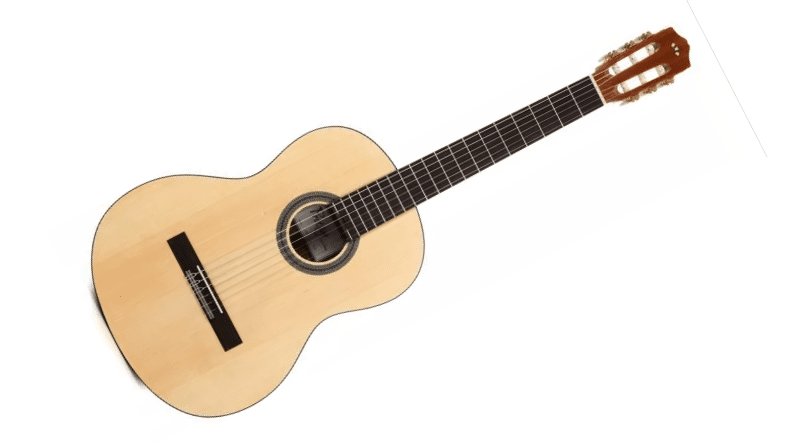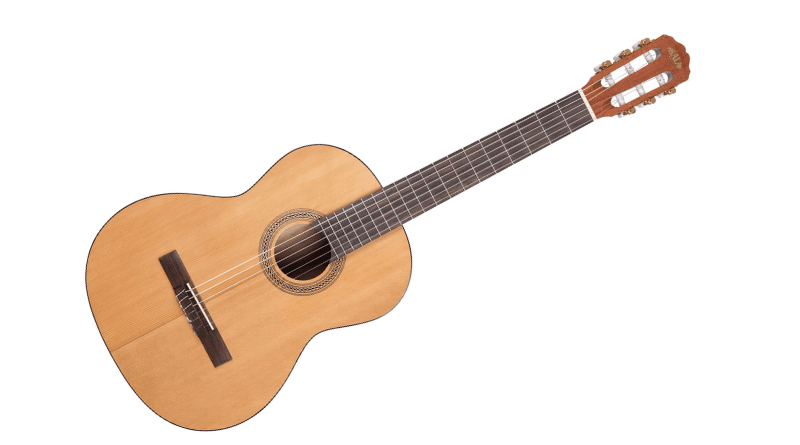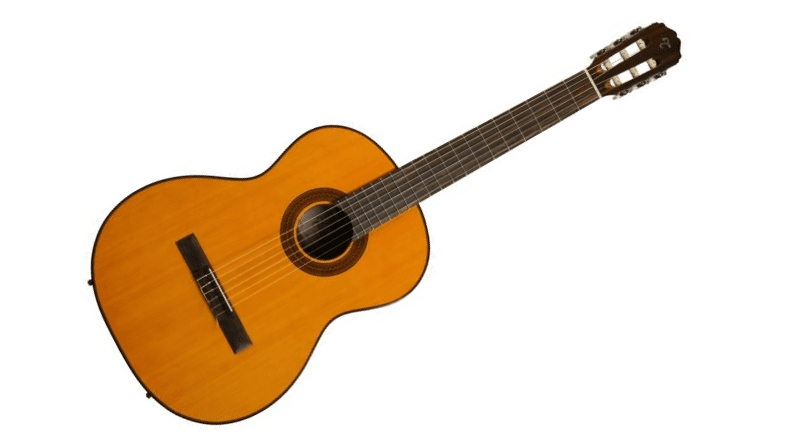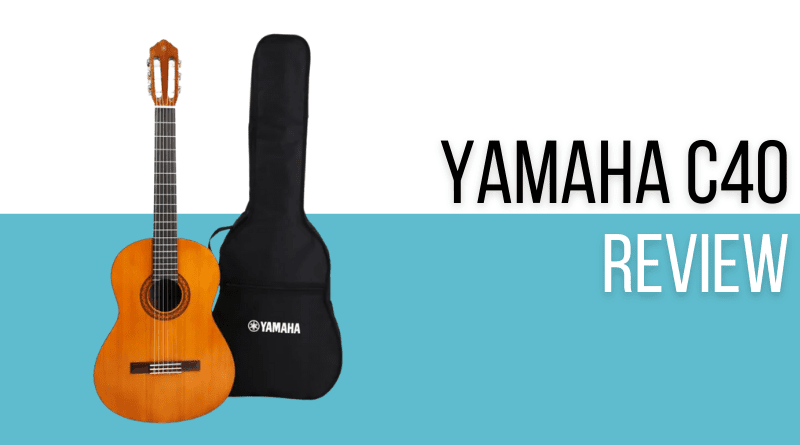Yamaha are highly regarded by many for their steel string acoustics, but it’s often forgotten that their classical guitars offer just as much in the way of quality and value. Take for example, the Yamaha C40.
The C40 is a student grade classical guitar that has impressive specs on paper, but what we want to know, is how it performs in the real world. In this KillerGuitarRigs Guide, we put the Yamaha C40 to the test.
Keep on reading to find out how this entry level classical guitar fared during our extensive testing.
Read more about our review process.
Contents
Who Is This For?
The Yamaha C40 is marketed directly at beginner level players. Being full size, it is ideally suited to the adult beginner, or to children stepping up from ¾ size models.
It is extremely affordable, coming in at well under $200 at most retailers, and it even comes bundled with a handy gig bag and a good quality clip on tuner.
Appearance / Features / Controls
There is nothing remarkable about how this guitar looks. It has a typical classical guitar shape, and a traditional slotted headstock with open gear tuners. It had black binding on the body, and an attractive rosette to give a little visual interest.
The body was constructed from all laminate woods, with laminated spruce for the top, and meranti on the back and sides. Meranti is also known as Philippine mahogany, and while not directly related to mahogany as a species, it has surprisingly similar tonal and aesthetic properties.
As for color, it was listed as Natural, but we found it to have a light vintage tint in reality. Despite not actually having a natural finish, we quite liked the finish.
It had a nato neck, with a standard 2” nut width. Nato is a wood that Yamaha uses often on their lower priced models. Like meranti, it is a mahogany substitute with extremely similar properties, but it costs significantly less, and it also happens to be a more sustainable wood.
Interestingly, the bridge and fretboard were made with rosewood. Rosewood used to be commonplace on the fretboards of guitars at all price points, but due to overuse it was banned from international import and export a number of years ago. In 2020 this ban on rosewood was lifted, but many manufacturers stuck with the lower cost alternatives they switched to while rosewood wasn’t available.
Yamaha have opted to include the pricier wood on this budget model, and it makes a big difference to the looks and playability.
One thing we wish they had added was strap buttons. Especially for beginners, having a strap can make the guitar easier to hold and control, and having an easy way to mount a strap would have been a real benefit.
Performance/Sound
The C40’s neck was comfortable, and quite forgiving considering the full width nut. The profile is listed by Yamaha as “Classical”, but to translate that to more useable terms, we noted that it had a C shape. The coating on the neck was (literally) the biggest sticking point, however. It had a gloss finish, which tended to get a little sticky, and slow down play.
We really enjoyed the tones we extracted from this guitar. They were delicate, with a prominent top end, and great focus in the mids. It did lack a little sustain, and some additional bass response would have really improved the overall warmth, but regardless, it was still very pleasant sounding.
The rosewood fretboard felt great under the fingers, and for us was one of the biggest highlights of the whole guitar. We were also impressed by the finish on the fret edges – there were no sharp edges, burrs, or any sign of fret sprout, all things that regularly occur on guitars at this price point, but Yamaha’s QA has been extremely effective in this area.
Tuning stability was something that concerned us a little at the beginning of the test. We did find it difficult to keep the C40 properly tuned, and found ourselves making regular adjustments. However, after a few hours of play, and with the strings properly stretched in, it finally settled, and became much more enjoyable.
Other Guitars to Consider
The Yamaha C40 is one of the best budget classical guitars out there, but it always makes sense to consider other options before making a final decision. Here are some excellent alternatives for your consideration:
Cordoba Protégé C1M

Cordoba is a company that specializes in Spanish and classical guitars, so even at their budget end, with models like the Protégé C1M, you’re getting a quality guitar. This model is available in ¼ size, ½ size, ¾ size, and full size, so it’s perfectly suited to players of all ages. It’s made with a spruce top, and mahogany back and sides, which gives it a truly classic tonal palate.
Kala Cedar Top Mahogany Classical

Kala is best known for their ukuleles, but their entry level classical guitars are efinitely worth a look. The Cedar Top Mahogany Classical, as you can probably guess, is made with a cedar top, and mahogany back and sides. The cedar makes it much more mellow than a spruce topped equivalent, giving it something of a unique sound.
Takamine GC1 NAT

For just a little bit more money, you could also consider a Takamine GC1 NAT. Like Yamaha, Takamine is a Japanese brand with a rich history of making high quality guitars. This particular model represents incredible value. Not only does it offer lively tones and superb responsiveness, it’s also loaded with top quality hardware, and high end materials like rosewood.
Final Thoughts on the Yamaha C40
The Yamaha C40 might be basic, but it’s well made, and for a beginner, it’s a great platform for learning the fundamentals. Yes, there are some shortcomings, but the benefits far outweigh the cons in this case. For very little money, you’re getting a solid starter guitar that also includes a gig bag and a tuner, something not many models at this price point tend to offer.
All things considered; it is a guitar that we’d be happy to recommend to players looking for a student grade classical model.
Check out these other articles you might like:


